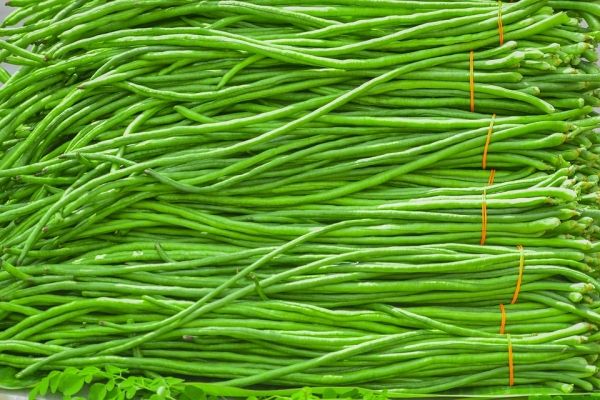In a collaboration between RIPE researchers and cowpea breeders from Ahmadu Bello University, and the International Institute of Tropical Agriculture, the width of cowpea leaves was found to correlate with above-ground biomass across diverse germplasm and environmental conditions. This easy-to-measure trait can be readily used for selection in breeding programmes for cowpea biomass in Nigerian fields.
“Cowpeas are a key source of rich protein for millions of people in sub-Saharan Africa and beyond,” said Saba Mohammed, Senior Research Fellow for the Institute for Agricultural Research of Ahmadu Bello University. “Cowpea grains are used for a variety of other purposes, whereas its fodder serves as a nutritious feed for livestock and a source of income for farmers who cut and store the fodder for sale during the dry season. Hence, developing cowpea varieties that can produce both grain and fodder optimally is vital, especially since there is a big market for the sale of both the grain and fodder in Nigeria and other areas in West Africa.”
This joint work between the University of Illinois, the USDA Agricultural Research Service, Lancaster University, and the Nigerian universities used a critically important collection of 21 cowpea genotypes from Nigeria and other African countries. While looking at productivity differences among the germplasms, the group from Lancaster, led by Elizabete Carmo Silva, found that in their greenhouse, the cowpea with wider leaves tended to produce more biomass.
The Illinois-based team of Lisa Ainsworth and Anthony Digrado had previously grown 50 different genotypes as part of their research on how canopy architecture affects canopy carbon assimilation. They also collected leaf size and above-ground biomass measurements finding a correlation between those traits when measured in the field.
Read more at Carl R. Woese Institute for Genomic Biology, University of Illinois at Urbana-Champaign
Photo Credit: Nandalal_Sarkar via Pixabay


